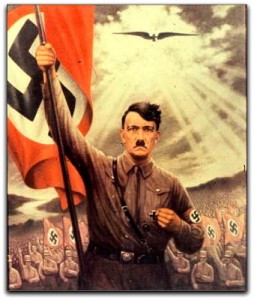No. 7 in our Songs with Astronomical Themes isn’t a song but an orchestral suite, “The Planets,” by composer Gustav Holst (1874-1934). This selection is the seventh and last movement, “Neptune, the Mystic.”
Here’s a picture of Gustav:
Despite his name, he was an Englishman. He came from a very musical family; his great-grandfather, grandfather, father, and wife were all musicians.
(Gustav’s brother Emil, however, moved to America, changed his name to Earnest Cossart, and became an actor. He appeared often as a butler in Hollywood films of the 30s. In 1942, Earnest acted alongside Ronald Reagan in “Kings Row,” the film in which Reagan’s character wakes up from surgery to find both his legs amputated and cries, “Where’s the rest of me?!”–a line that Reagan later used as the title of his autobiography.)
Okay, back to Gustav. As a boy he suffered from asthma, poor eyesight, and neuritis in his arms that made playing the piano difficult for him. His mother introduced him to Theosophy, which is how he became interested in mysticism, Eastern religions, and astrology.
In college he studied Sanskrit, and during his “Indian Period” he set a number of his works to Sanskrit texts.
“The Planets,” begun when Gustav was 40 years old, is based on astrology, not astronomy; the seven movements correspond to the seven planets used in astrology (Mars, Venus, Mercury, Jupiter, Saturn, Uranus, Neptune).
Although Holst didn’t think the composition was one of his best, it became instantly popular and won him lasting fame.
Here’s an album cover from a 1970s recording of “The Planets”:
The movement here, “Neptune, the Mystic,” has a definite mystical sound to it, especially with the ethereal women’s choir that comes in about halfway through. In fact, to anyone who’s ever seen any film or TV show that deals with space or science-fiction, this movement is likely to sound awfully familiar. If the piece isn’t quoted exactly, it’s certainly imitated, so much so that when we try to imagine what “space” sounds like now, I believe we unconsciously think of Holst’s “Neptune.”
“Neptune” was one of the first pieces of orchestral music to have a “fade out” ending, and I’ve always loved Holst’s instructions for how performers are to achieve this effect:
The women’s chorus, he writes, is to be “placed in an adjoining room, the door of which is to be left open until the last bar of the piece, when it is to be slowly and silently closed.”
So here it is, Gustav Holst’s “Neptune, the Mystic,” from “The Planets”:





















